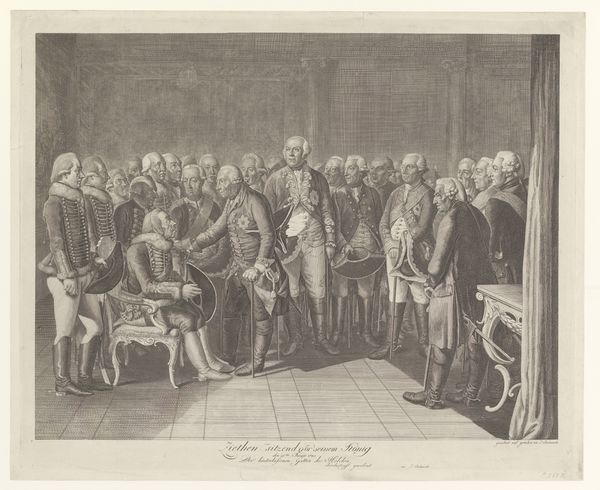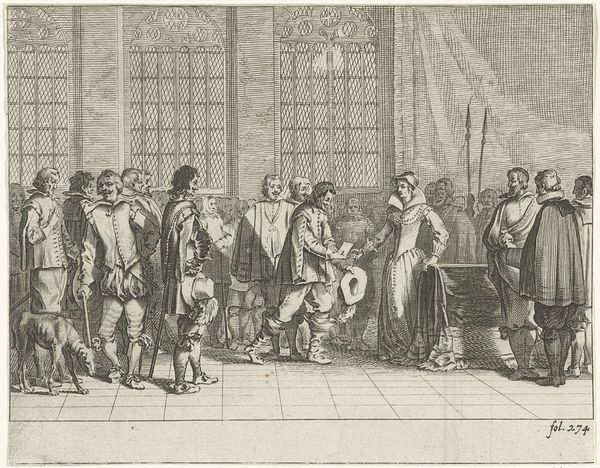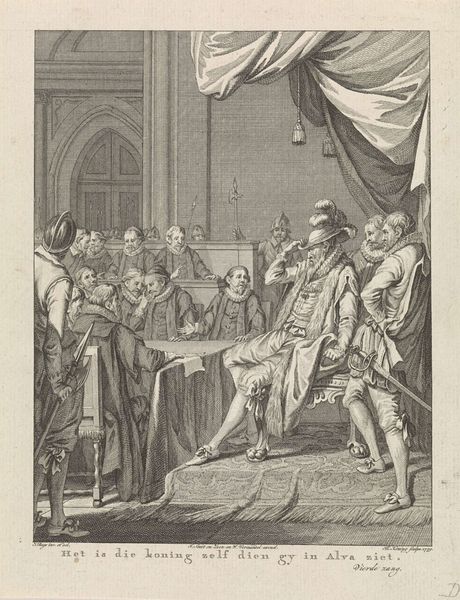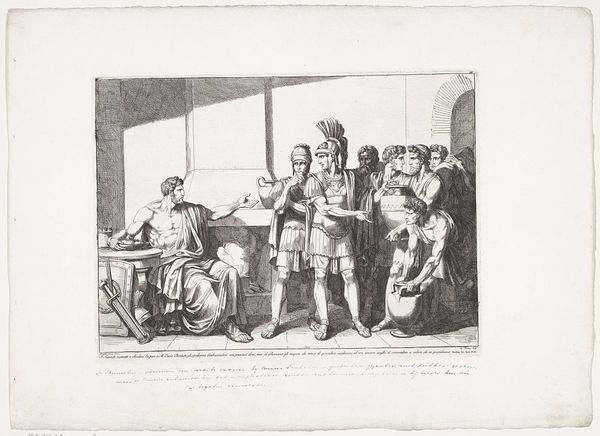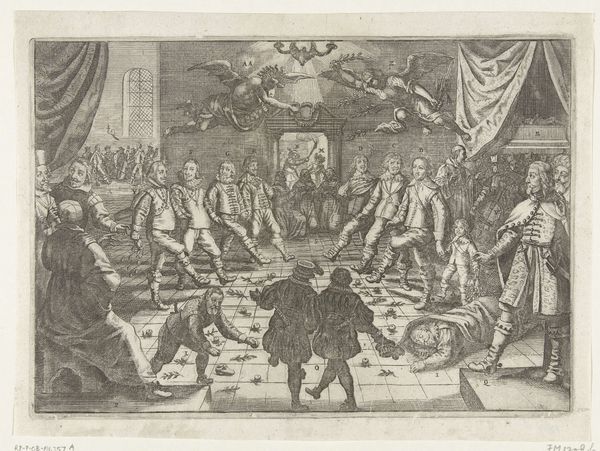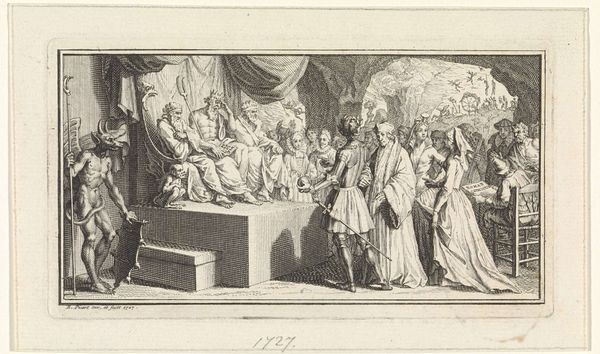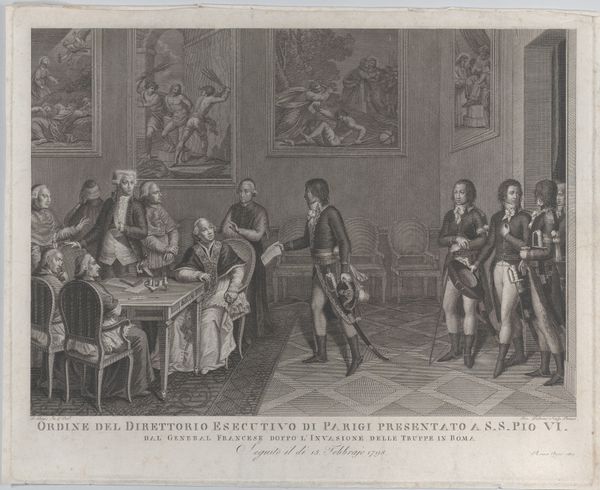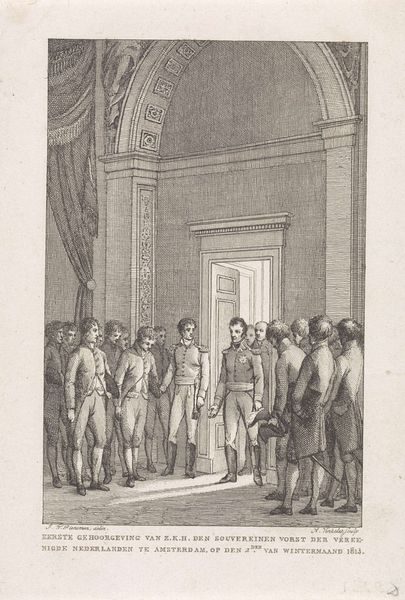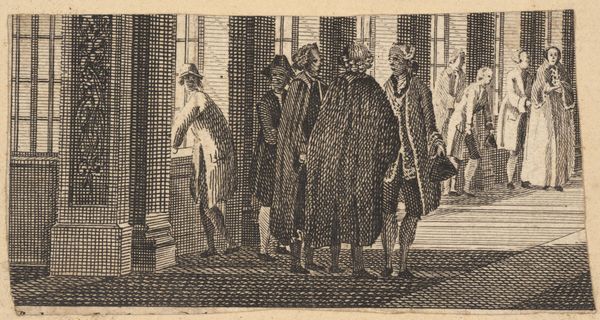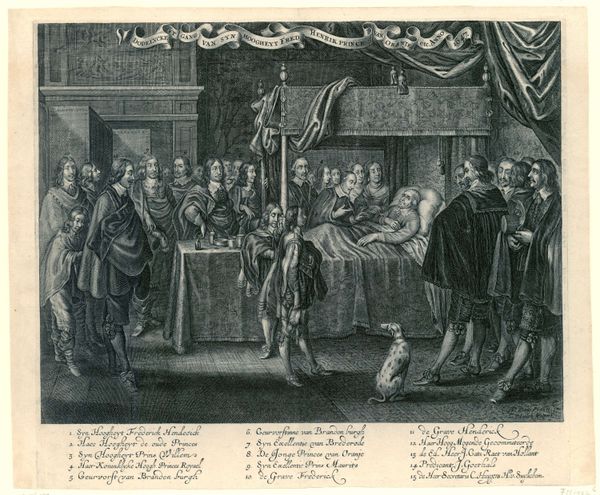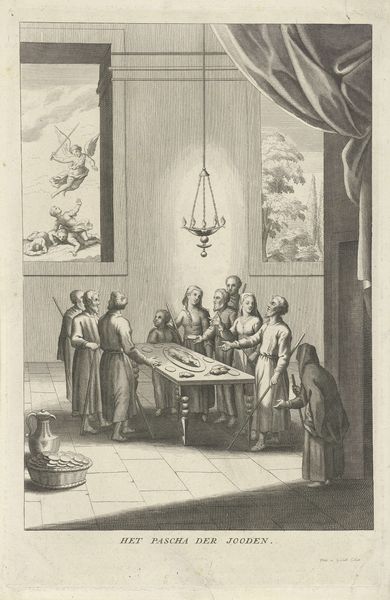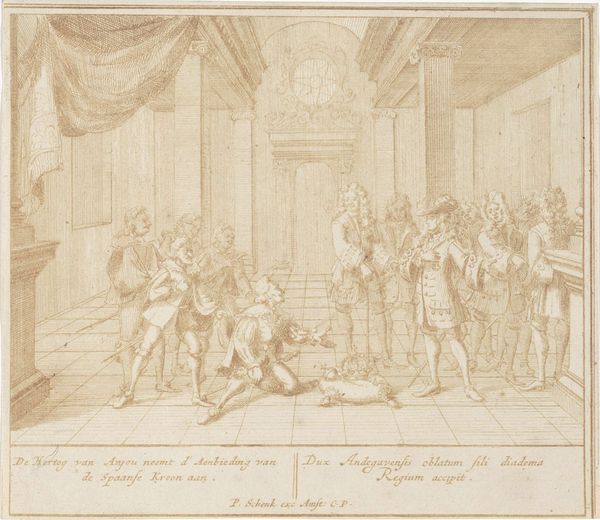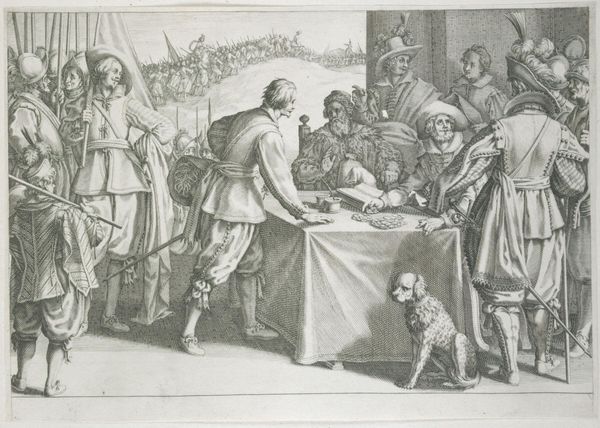
drawing, lithograph, print, paper, engraving
#
drawing
#
neoclacissism
#
narrative-art
#
lithograph
# print
#
paper
#
history-painting
#
engraving
Dimensions: 277 × 397 mm (image); 299 × 421 mm (primary support); 408 × 554 mm (secondary support)
Copyright: Public Domain
Editor: Here we have Nicolas Henri Jacob's "Treaty of Léoben," a lithograph from around 1822. It depicts a formal gathering, seemingly a negotiation or signing of some kind, with a palpable sense of tension in the air. What strikes me is the contrast between the figures, their postures, and the setting. What do you see in this piece? Curator: What I see is a visual representation of power and its performance. "Treaty of Léoben" is more than just a historical document; it's a meticulously crafted narrative meant to legitimize a specific political agenda. Consider how Napoleon is positioned – his hand gestures assertively over the map, embodying control. How do you think the artist’s choices reinforce or challenge existing power dynamics? Editor: Well, the composition definitely directs our eye to Napoleon. It seems he's meant to be seen as a dominant force, while the others appear almost as supporting characters in his narrative. Curator: Exactly! This piece actively constructs Napoleon’s image as a leader, yet it's crucial to acknowledge that such imagery often conceals the complex negotiations and power struggles behind the scenes. We should question whose perspectives are privileged and whose are erased in this portrayal. The treaty itself had huge impacts on the map of Europe and those who were living there, but we're presented with a clean narrative. Editor: That’s a great point. It makes you wonder about the individuals who were affected by the Treaty but aren't present in this depiction. Curator: Absolutely! We can analyze Jacob's print not merely as an aesthetic object but as a political statement. How does considering the historical and social context influence our understanding of the artwork? Editor: It really reframes it. It moves beyond just admiring the artistic skill, and makes you think critically about the story that's being told. Curator: Indeed. By questioning the narrative and digging deeper into the historical context, we reveal the multifaceted layers of power, ideology, and representation embedded in the art. Editor: This has totally changed the way I see history paintings! Curator: And that's the aim, isn't it? To ignite that spark of inquiry.
Comments
No comments
Be the first to comment and join the conversation on the ultimate creative platform.
